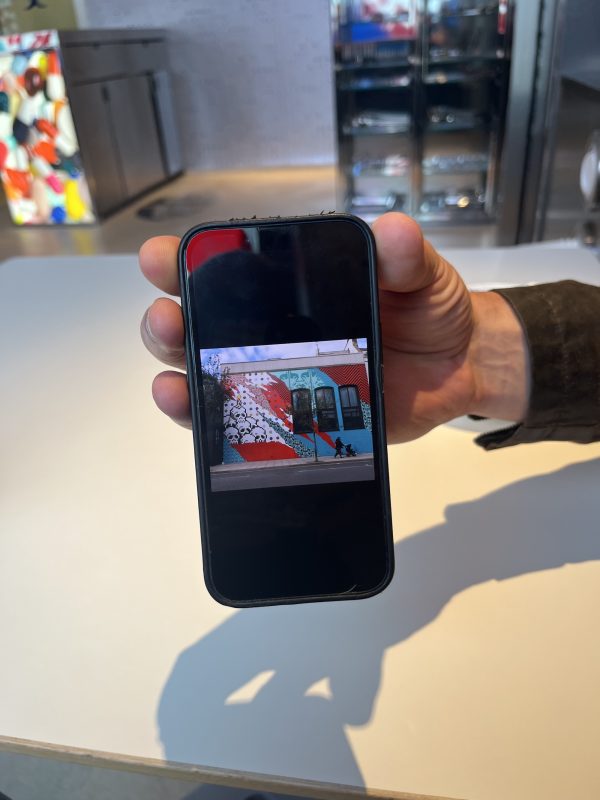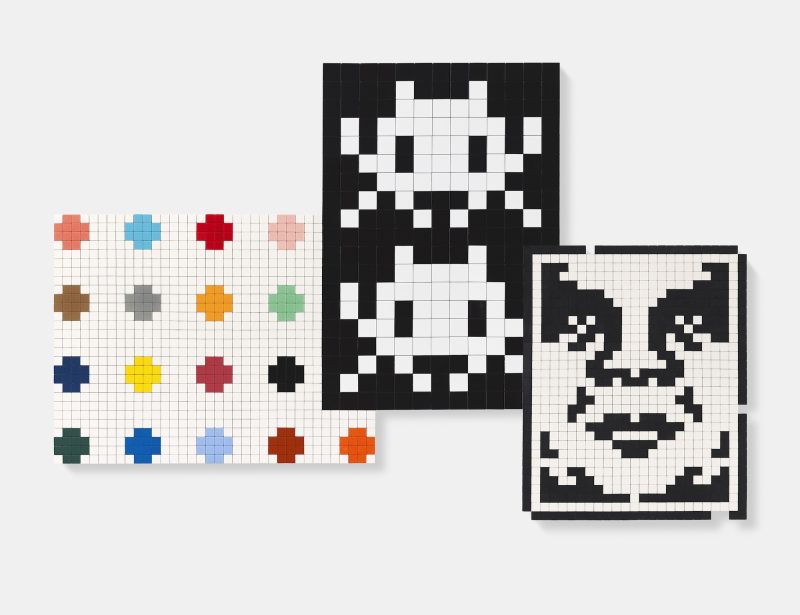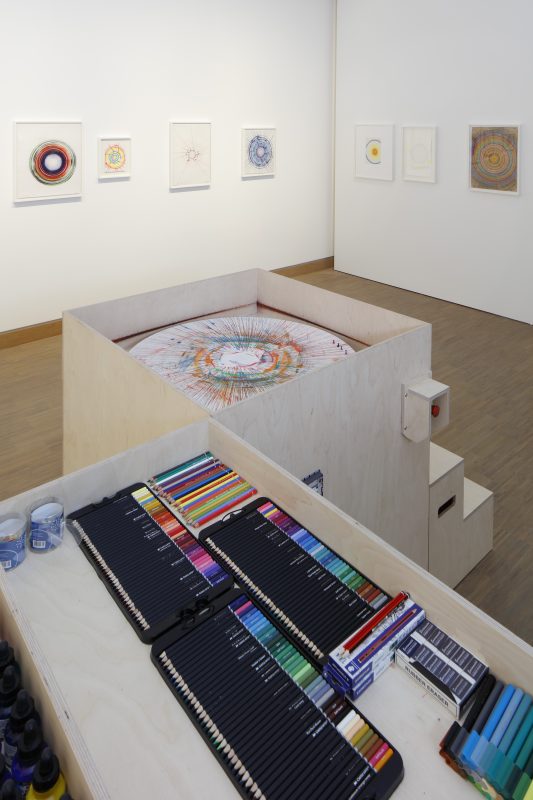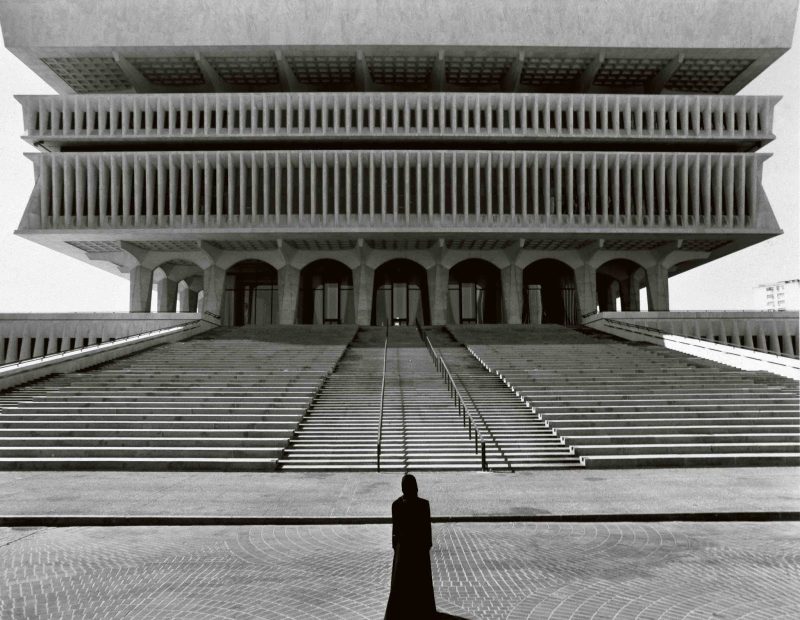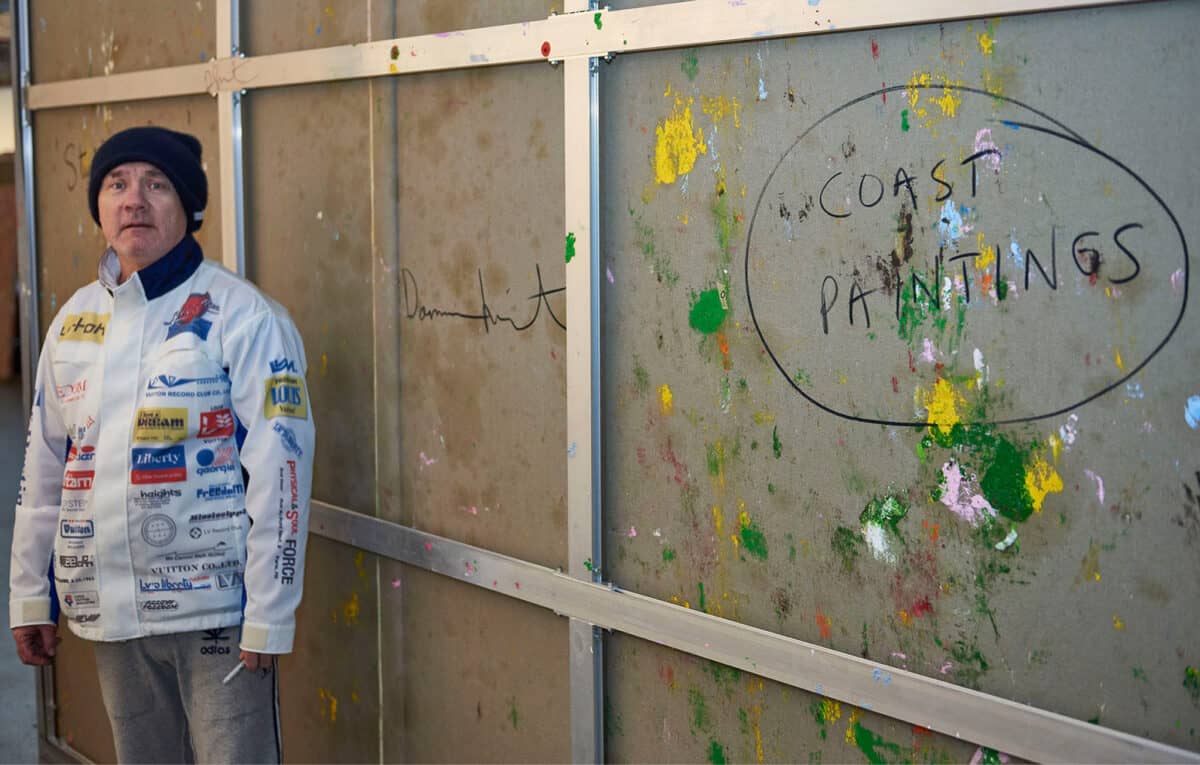
Review: Damien Hirst: Where the Land Meets the Sea. On the surface, everything is as it should be: Damien is collaborating with Heni again; an auction house is the venue for a sell-out show; and the new works are an even-handed expression of what it means to be Damien Hirst in the twenty-first century, post-shark, post-Sotheby’s, post-Treasures and, as always, post-postmodern. But beneath the surface, there’s something weird about these works, this show, all of it, the whole idea that Damien has turned his hand to landscape painting. It’s not a bad weird, but it’s unsettling. I’ve seen enough of these shows and obsessed enough over Damien’s every move to know that something’s afoot with these new paintings.
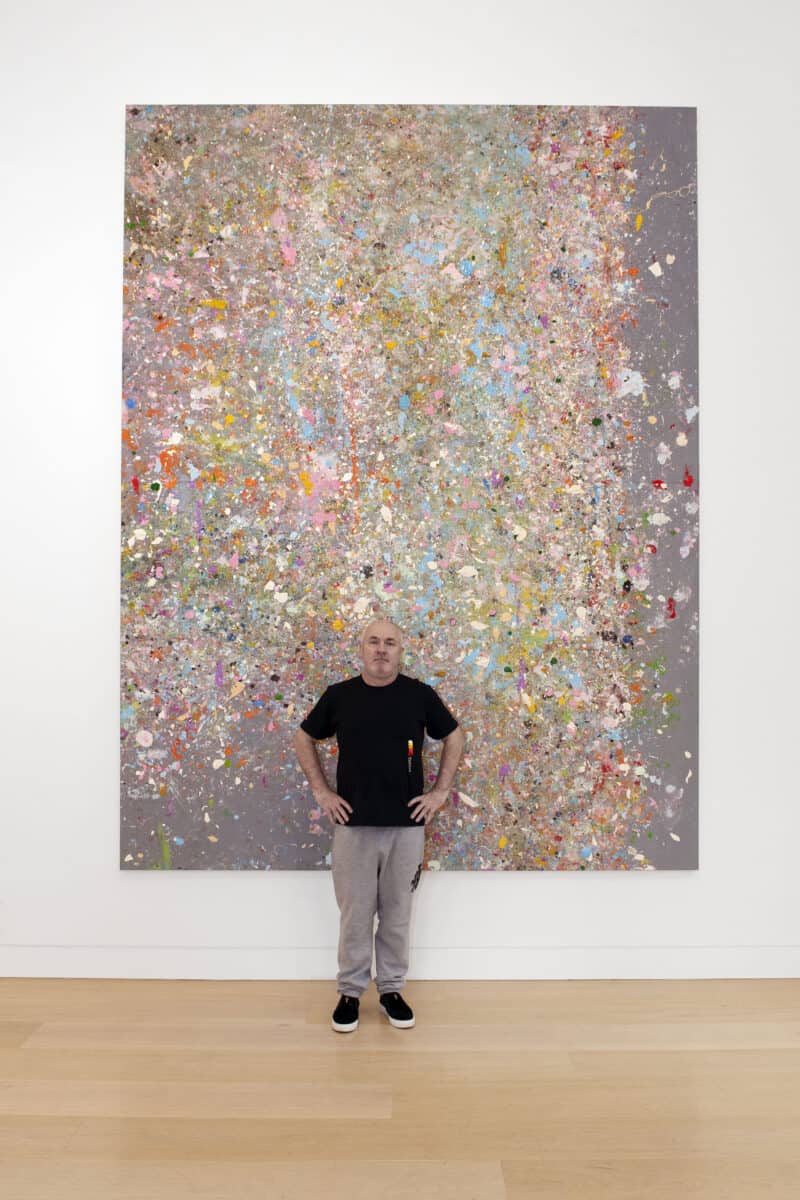
Growing up by the sea does something to the developing mind that leaves us with a potent sense of the edge of the land, the edge of being and in that sense, this is the most personal body of work he has created, being as it is born of memories of childhood holidays on the Yorkshire coast. I remember discovering, when I first moved to London, that most people didn’t spend their formative years on beaches in summer and winter alike, and that they had not habitually travelled by boat over unfathomable depths just to catch a glimpse of civilisation. These paintings – with Damien’s signature bravado – bring flooding back the awe and wonder of the most unknown and unknowable area of the Earth, which, if you’ve lived with it first-hand, shapes your sense of possibility. If the show is about anything, it’s the fact that we are surrounded, forever contained by a force that we can never, ever truly know.
Damien doesn’t do things by halves, nor does he disappoint. As always, it’s slick, flawlessly executed, as steady as a surgeon’s hand. The canvases soar into the ceiling and expand into the depths of Phillips’ monumental light-filled galleries, rising and falling like the waves they depict. The show comprises three new series of paintings, never before shown together and, by my reckoning, never shown in London before. Unsurprisingly, it’s big; it’s a lot to taken in, but it’s not overwhelming. Actually, this is Damien in the most contemplative, tranquil mood we’ve seen for some time.
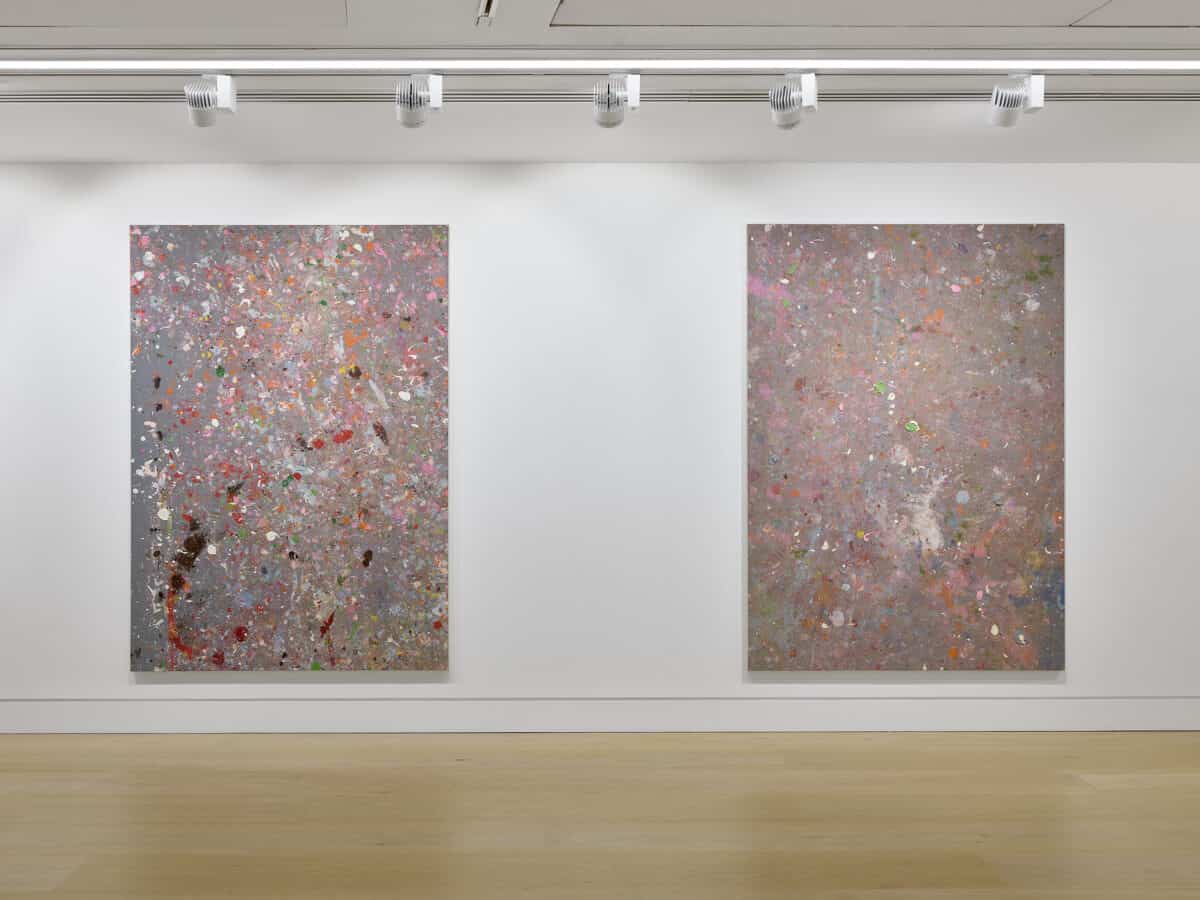
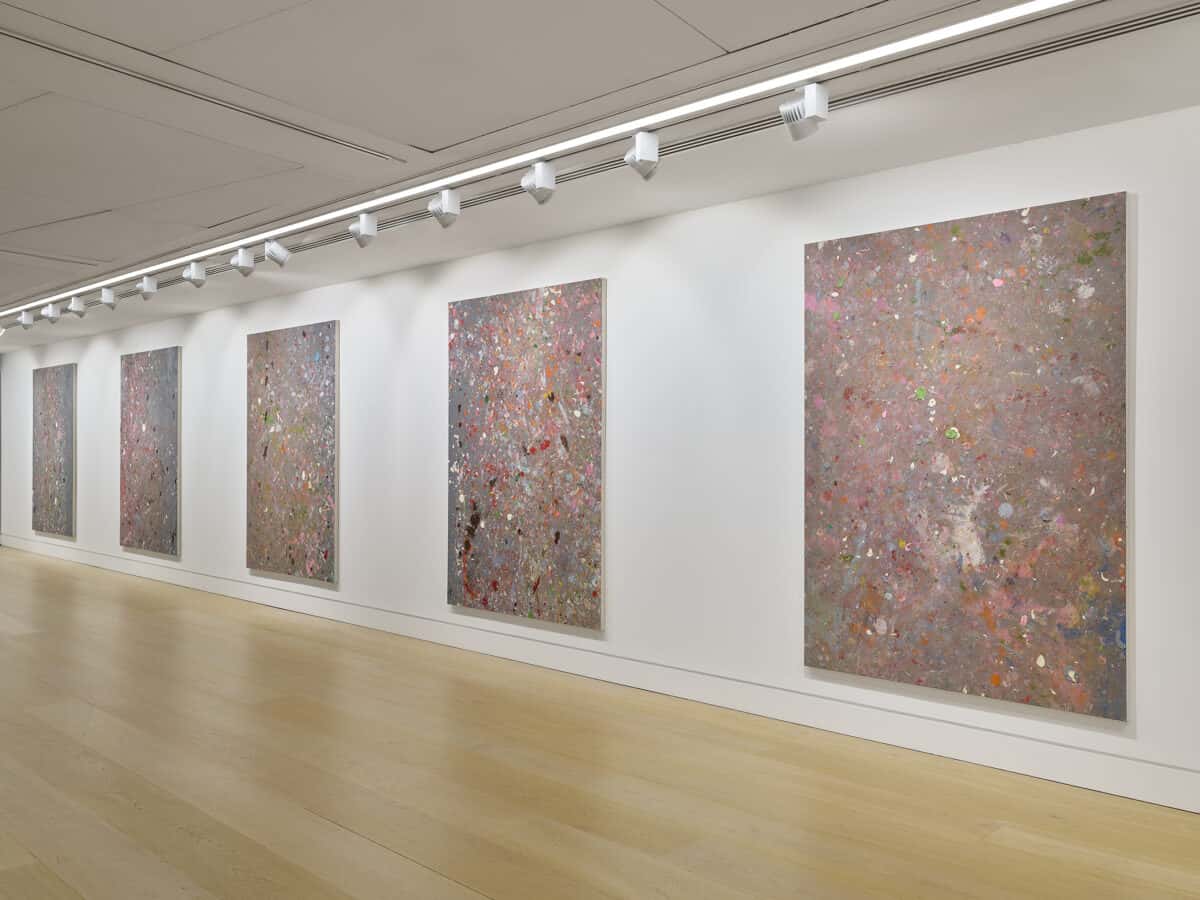
The Coast Paintings started life as grey canvas sheets that protected the studio floor from the drips and splatters that went into the making of the Cherry Blossom Paintings, which are yet to be seen in the UK. They became further exercises in colour, along with the Spots, the Veils and The Currency, when Damien stretched the canvases and called upon his Abstract Expressionist forefathers to transform them into explosions of pink, yellow, orange and white. The title, ‘Where the Land Meets the Sea’, incidentally, originates from the unpainted area of the canvas, which originally marked the edge of the studio and now resembles an aerial photograph of the sea fizzing on the shoreline. As abstract paintings, they’re not up to much, as if they’re knock-off Hoylands, but when you fix your mindset to the idea of the shoreline and your memories of the ocean, they actually fare pretty well as evocative, bristling portraits of the threshold of existence.
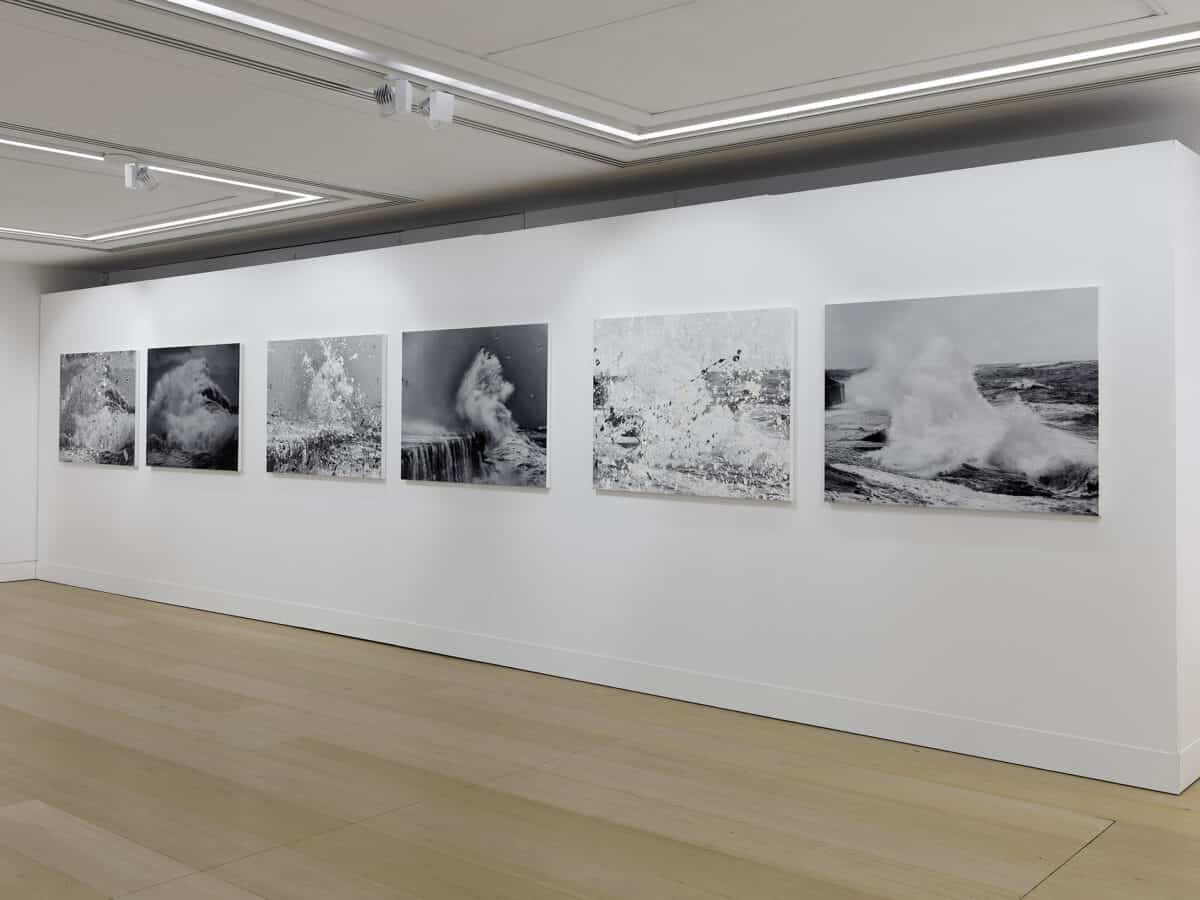
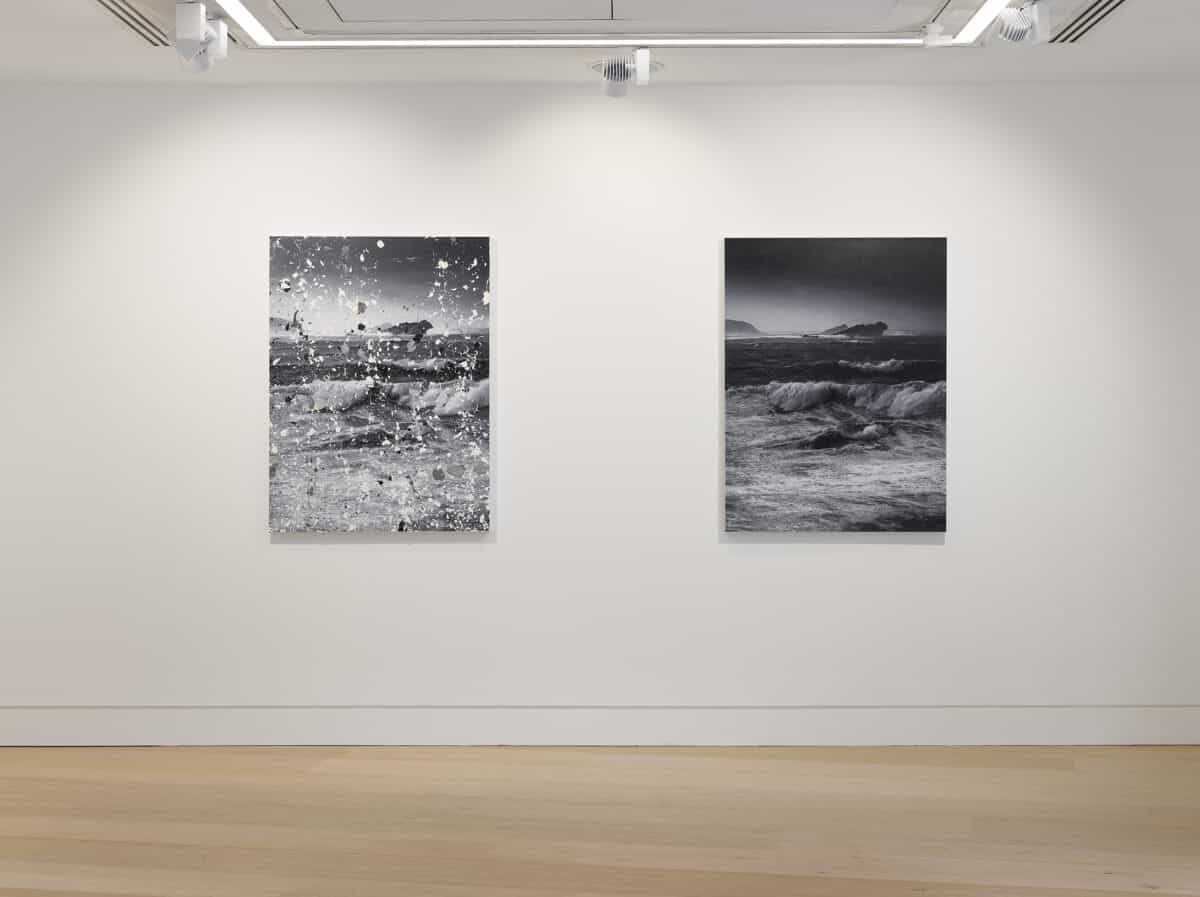
The Sea Paintings are the latest move in the series of Fact Paintings – beguiling exercises in photorealism painstakingly painted by assistants, but this time only in black and white. Some people are immensely impressed by photorealism, and good for them, but the magic in the odd-looking ones where the source image has been blown up so much it pixelates and the assistants have faithfully copied every blurry pixel. The collision of media here is a very Damien sort of joke – half serious and half in-your-face; it’s just there as a sort of weird interruption to the calm flow of faithful depiction that reminds you that photorealism is dumb art, expensive art, and art for people who don’t want to work too hard.
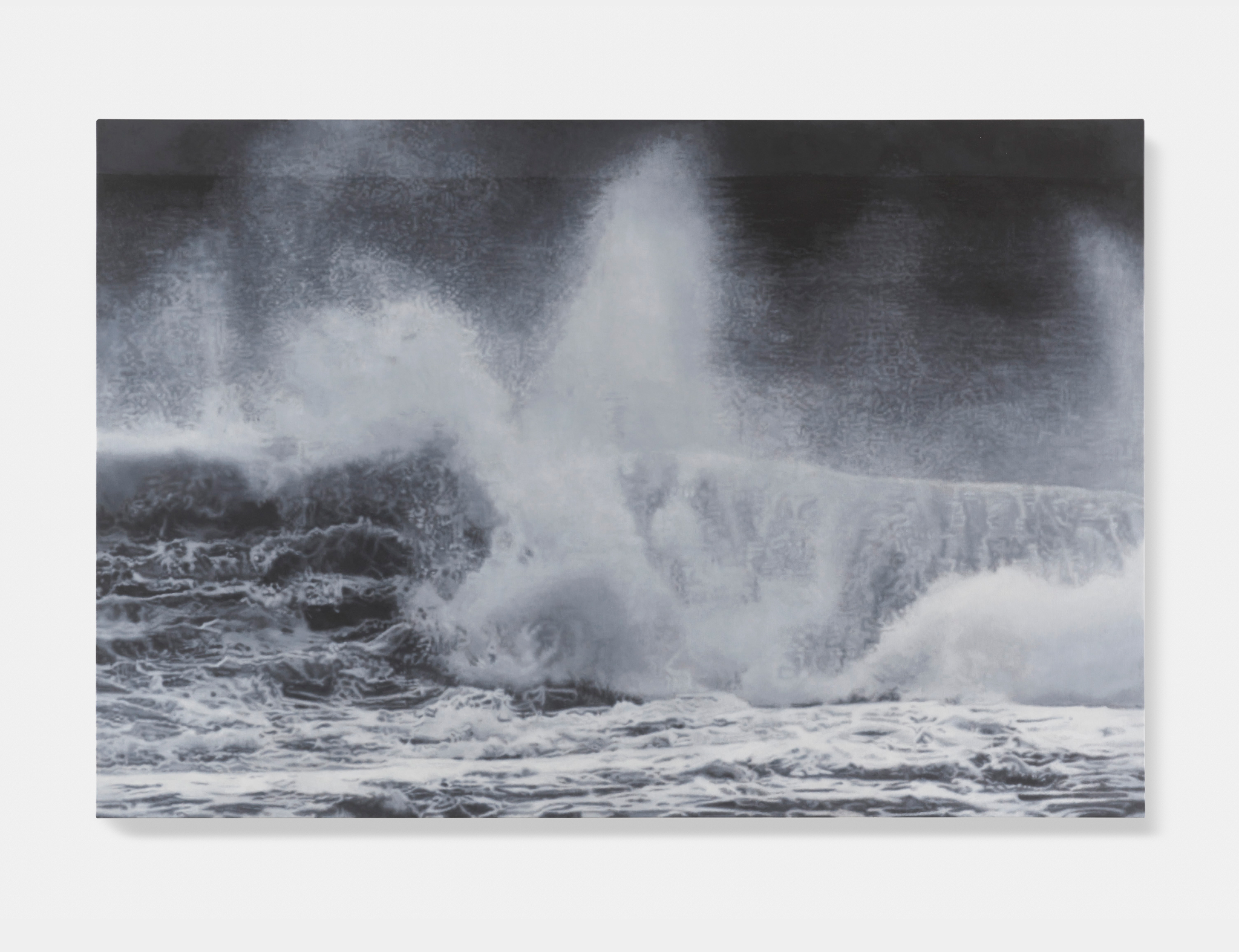
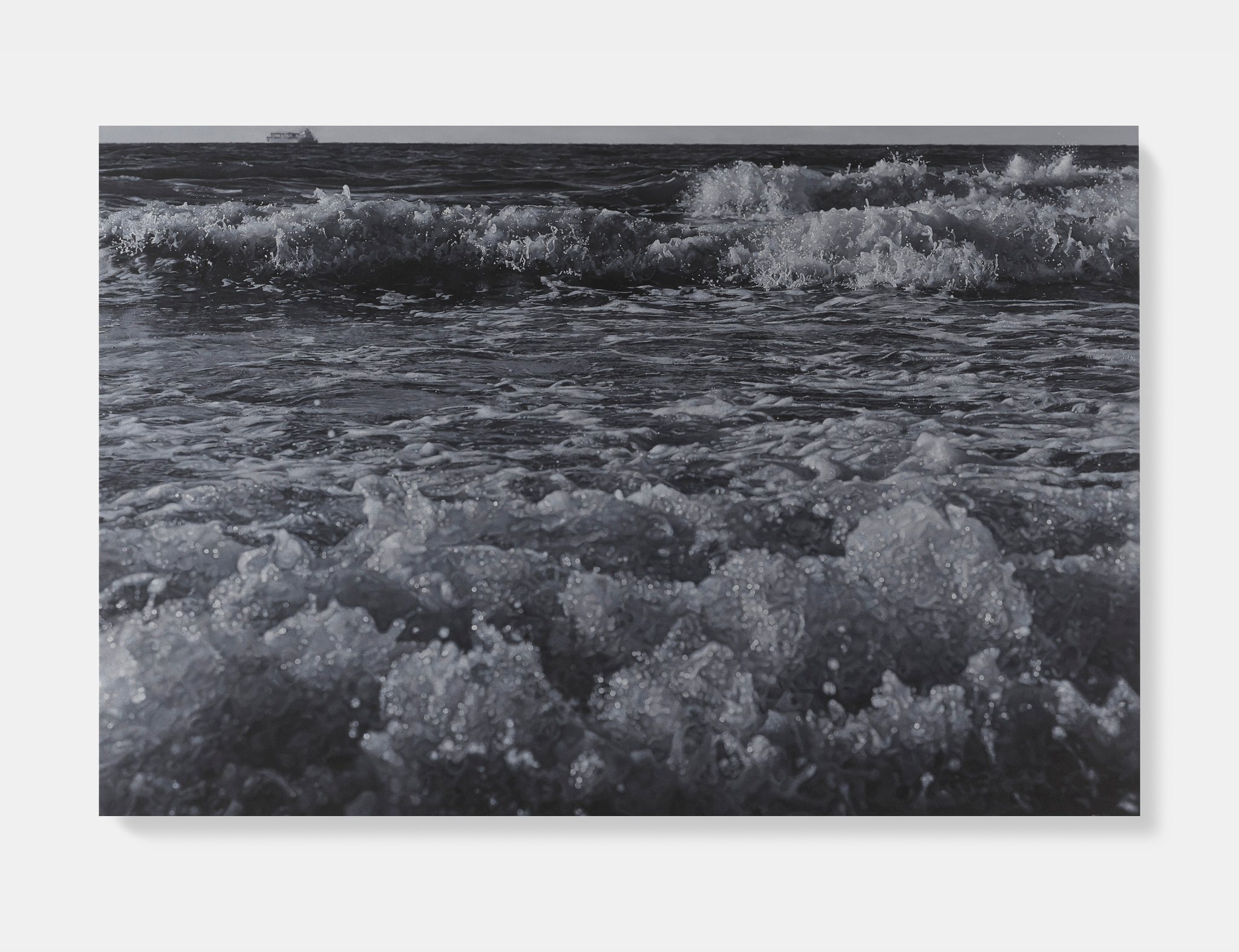
The Seascape Paintings are the best thing in the show, even though, in a sense, they are the most simple-minded. For these, Damien took the fruits of his assistants’ labour and splattered them with a whimsical homage to a landlocked Pollock, both man and fish, trying to escape the dusty confines of figuration. I say it like that to play into the hands of those of you who want to bemoan the plight of those assistants and who wish to preserve the supposed purity of figuration over abstraction. The joke’s on you, of course, as it always is. The contrast between the flat photographic plane of the image and the indecently tactile interventions from Damien’s own fair hand creates a heightened sense of drama and amplifies the very sensation the photograph or its simulation in oil was unable to convey.
It’s all very Damien, but also not at the same time. The scale from vast to tiny, the emphasis on colour and form over narrative or meaning, and experimentation with variations on theme are all textbook Damien, and that’s to his credit. What is not so typical is the way it’s all couched in memory, a narrative of a life lived, as if Damien in middle age is reflecting on his personal role, as author and as lead character, in creating the meaning of his art. That’s all new. Equally remarkable is the turn towards nature, not as scientific object as in the Natural History series but as a thing of beauty and a source of artistic inspiration, as if the ageing Damien Hirst is finally waking up to the world that so captured Monet and Hockney in the gathering dusk.
These three series centred around the sea, along with the Cherry Blossoms and the new, as yet unfinished, River Paintings, mark a turn for Damien towards something altogether more sober, grown-up and, just perhaps, more down-to-earth, less deathly. That’s what I meant when I said something’s afoot: after the spectacle of Treasures, Damien is changing direction right before our eyes, just as he turned to painting skulls, crows and parrots after that Sotheby’s sale. This is the start of something.
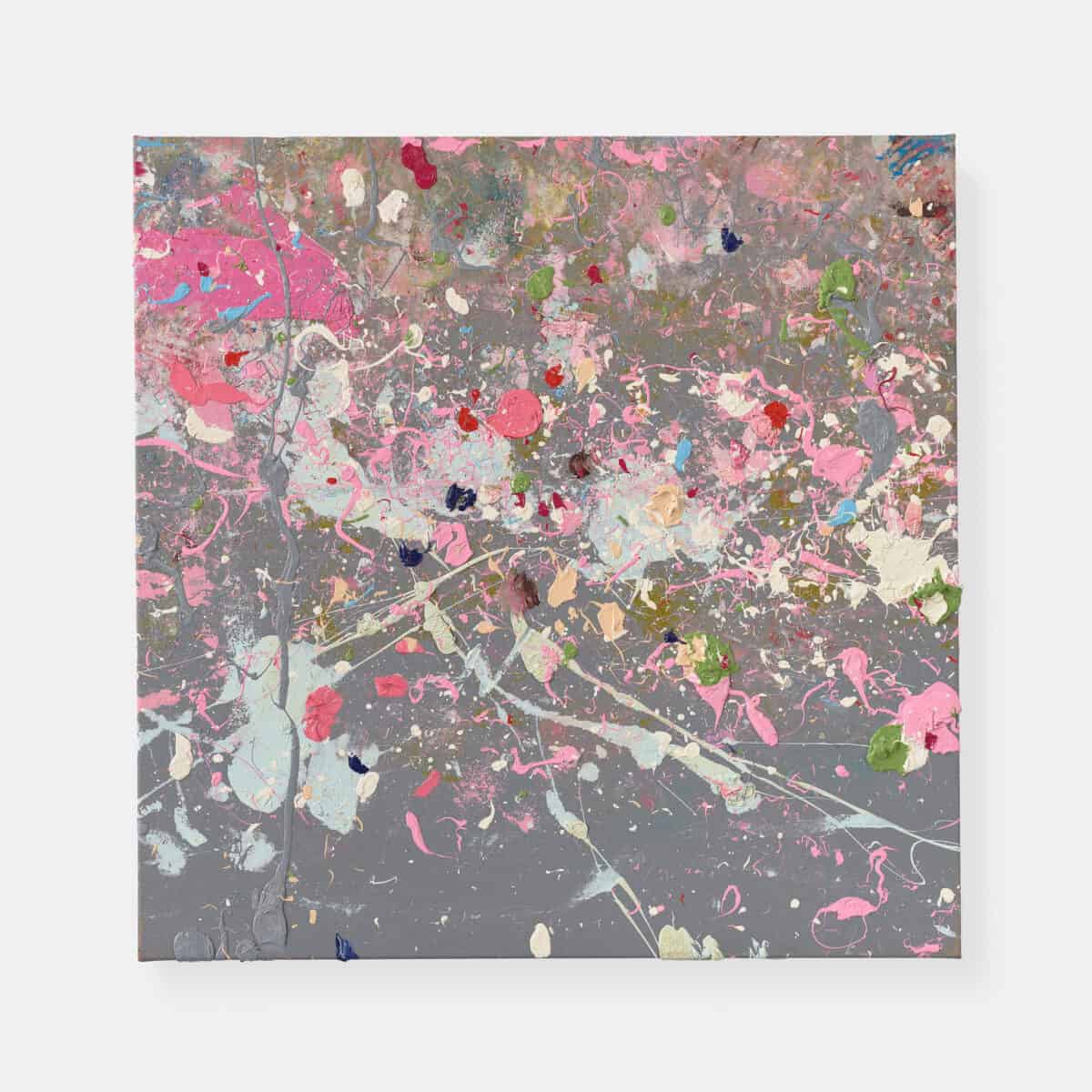
Let’s be honest – and I say this as the only person alive who both loves Damien’s work and doesn’t make any money out of it – these sea paintings are not his best work, but they don’t need to be because they’re steps along the way to something else. A multitude of vicious things were said about the parrots, but in a way they were just the rehearsal for this new phase of work – beyond sharks and spots – in which Damien puts his hand to brush and drives the game forward again. And so too these paintings are mere rehearsals for something greater, more spectacular, and more Damien than ever.
Damien Hirst: Where the Land Meets the Sea, Phillips, London, 20th July – 18th August 2023
Review Daniel Barnes @drdanielbarnes
